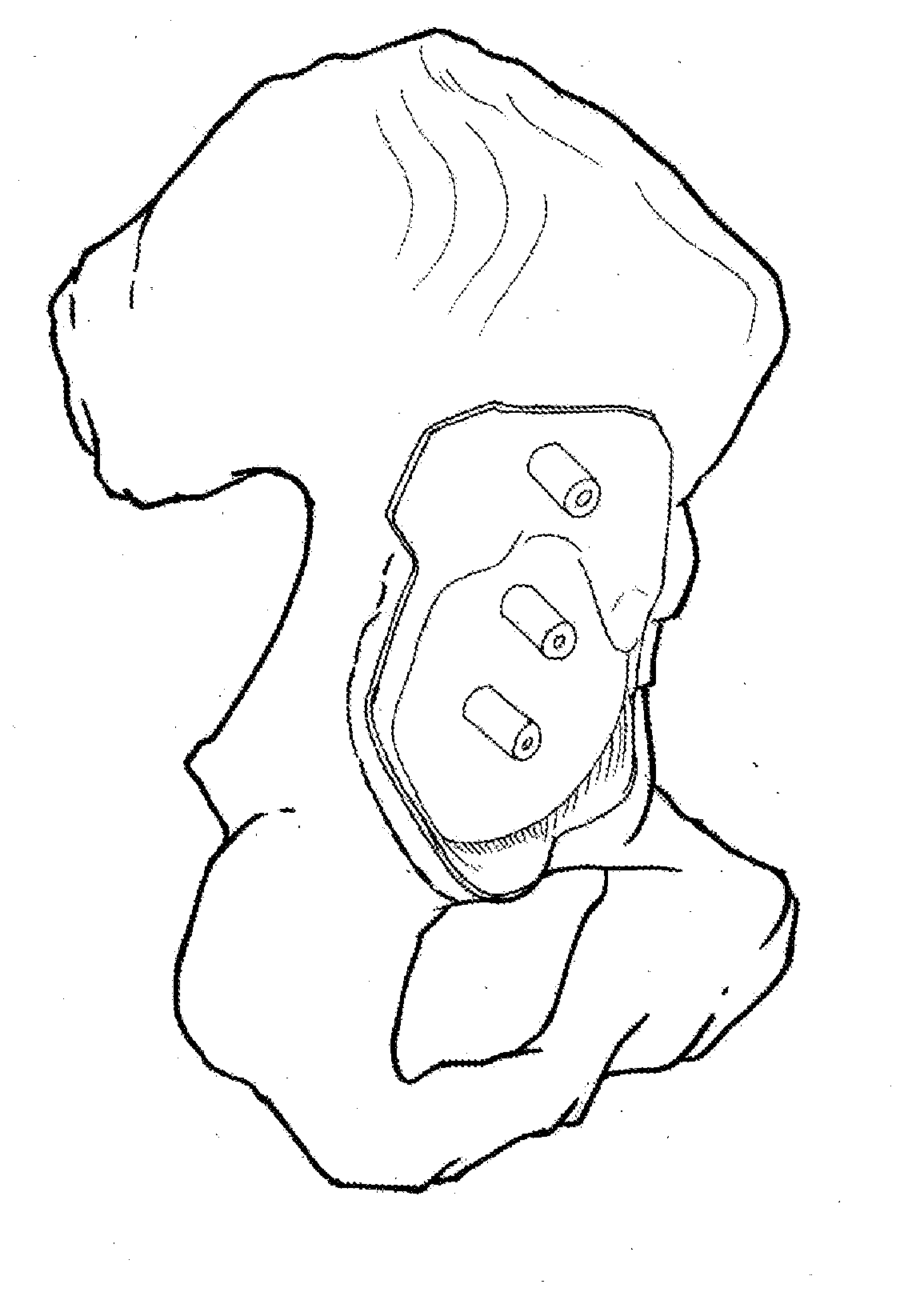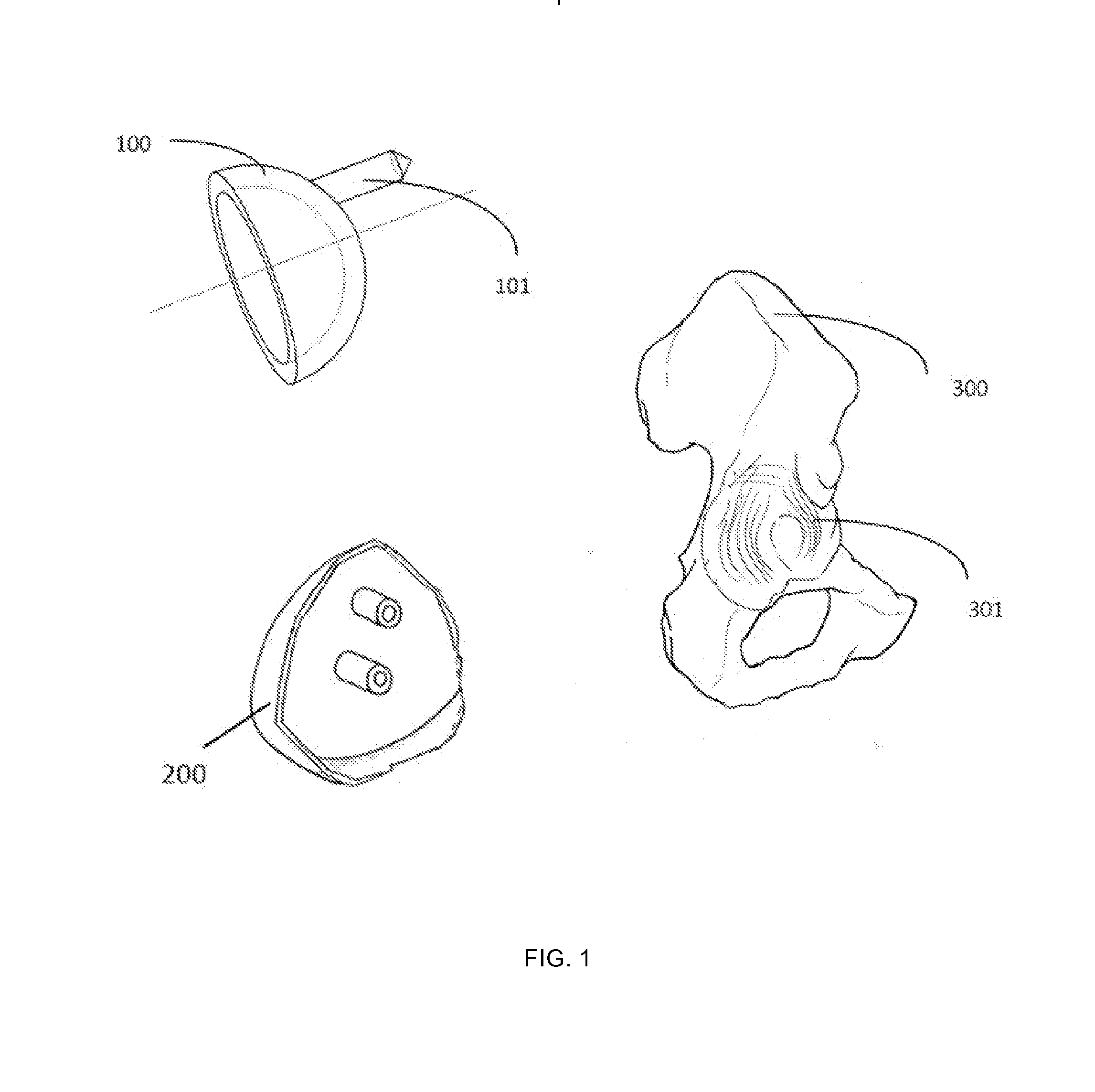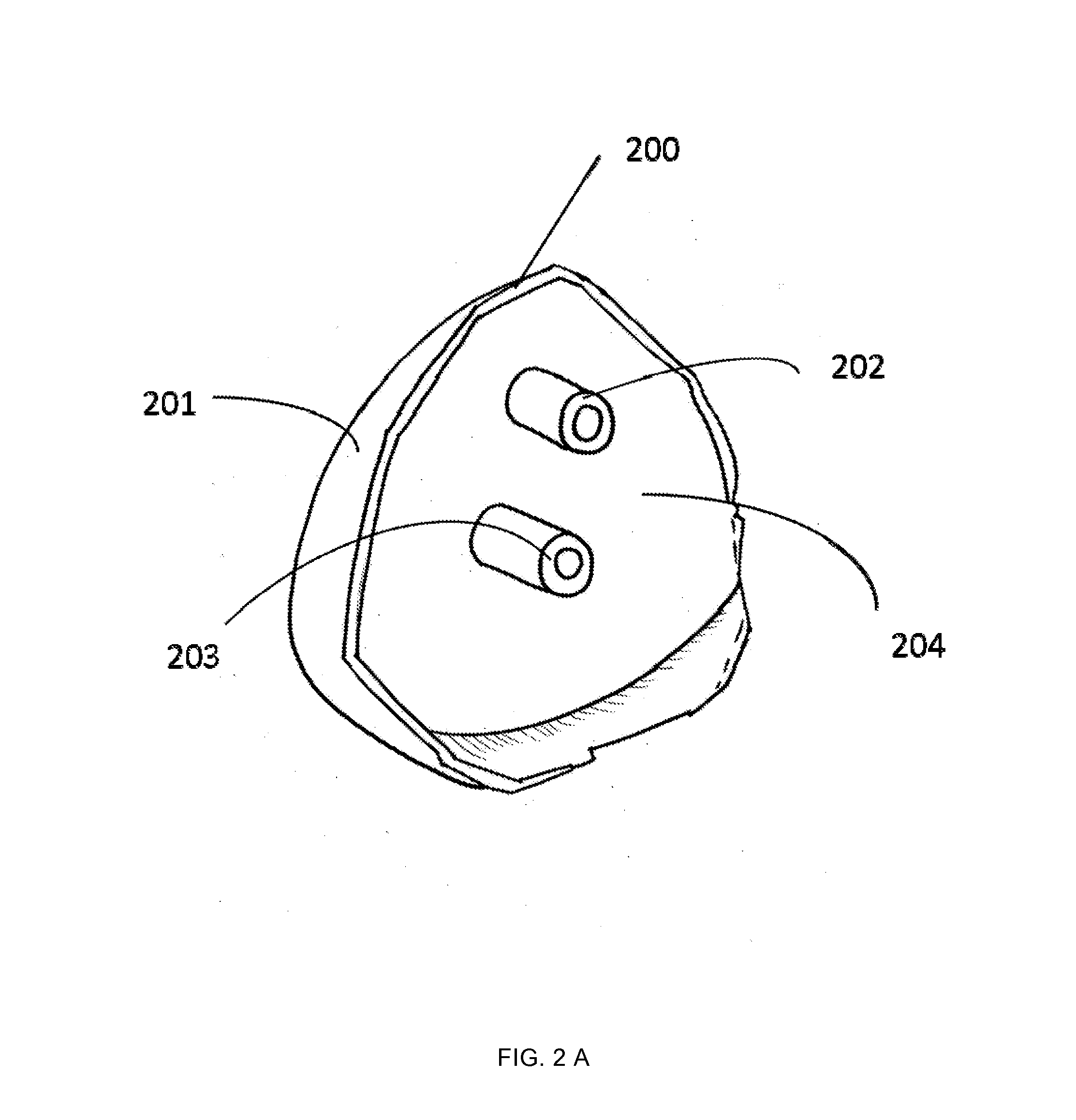Patient-specific guidance system and acetabular component with offset stems for hip arthroplasty
- Summary
- Abstract
- Description
- Claims
- Application Information
AI Technical Summary
Benefits of technology
Problems solved by technology
Method used
Image
Examples
Embodiment Construction
[0024]Referring to FIG. 1, the invention includes an acetabular component 100 with an offset stem 101 and a patient-specific guidance system 200 in order to match the acetabulum 301 of the pelvis 300. Referring to FIG. 2 A, the patient-specific guidance system 200 has a specific exterior surface 201, one or more drill guiding options 202 and 203 and a guide plane 204. First, a series of 2D images of the patient's pelvis and femur are acquired preoperatively. 3D CAD (Computer-aided design) models are generated from these images, which are used to accurately rebuild the pelvis and femur in the computer. Physical 3D models can be manufactured using a rapid prototyping machine and other methods. Pre-operative planning is performed based on these 3D CAD models on the computer and / or the physical models. With the help of 3D data and preoperative planning stations, the acetabular component is sized and a specific position is chosen in which to implant it. Any slightly modified standard ace...
PUM
 Login to View More
Login to View More Abstract
Description
Claims
Application Information
 Login to View More
Login to View More - R&D
- Intellectual Property
- Life Sciences
- Materials
- Tech Scout
- Unparalleled Data Quality
- Higher Quality Content
- 60% Fewer Hallucinations
Browse by: Latest US Patents, China's latest patents, Technical Efficacy Thesaurus, Application Domain, Technology Topic, Popular Technical Reports.
© 2025 PatSnap. All rights reserved.Legal|Privacy policy|Modern Slavery Act Transparency Statement|Sitemap|About US| Contact US: help@patsnap.com



